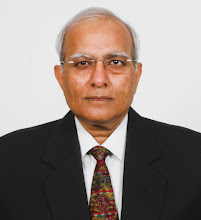Brain Drain or Draining the Brain? A Policy Perspective on India’s Skilled Migration Challenge
https://lathateacher.wordpress.com/wp-content/uploads/2015/10/brain-drain-1-638.jpg
India has long grappled with the
outmigration of its highly skilled professionals to developed economies, particularly
the United States. Commonly termed “brain drain,” this trend reflects not only
global opportunity but also domestic shortcomings. This brief re-examines the
migration narrative, arguing that the greater concern lies not in the departure
of talent but in institutional conditions that leave intellectual capital
undernourished. Policy interventions must shift from containment to
empowerment, ensuring that India’s knowledge ecosystem values its professionals
before they migrate and supports their reintegration when they choose to
return.
Introduction
Over the past two decades, India
has become one of the world’s largest exporters of skilled professionals. The
United States, notably, has absorbed a significant share of Indian engineers,
scientists, physicians, and academics, many of whom were trained at publicly
funded institutions such as the IITs, AIIMS, and NITs.
While global mobility is essential to the dynamism of knowledge economies, the persistent migration of top-tier Indian talent raises critical questions: Are professionals leaving due to better prospects or because they find it difficult to fully realize their potential at home? Has India built an ecosystem that retains, rewards, and reinvests in its skilled minds?
Key Trends in Talent Outflow
- A 2023 study by the Ministry of Education
reported over 750,000 Indian students pursuing higher education abroad.
- The number of Indian-born Science, Technology,
Engineering, and Mathematics (STEM) professionals entering the U.S.
workforce increased by nearly 85% between 2011 and 2021.
- Indian nationals received the highest number
of H-1B visas in 2024, largely for advanced technological roles.
These figures reflect global confidence in Indian talent, but also signal potential gaps in domestic retention policies.
Internal Drain: The Unseen Crisis
Beyond physical migration lies a
subtler erosion of capacity:
- Bureaucratic roadblocks inhibit academic autonomy and institutional innovation.
- Inadequate research funding
and infrastructure prevent world-class output.
- Faculty compensation
disparities, especially in private institutions,
undermine motivation.
- Limited recognition of
interdisciplinary and policy-relevant work dampens engagement.
- Gatekeeping in leadership
and mentorship roles blocks pathways for
reform-minded thinkers.
As a result, many professionals depart not only for economic reasons, but in search of institutional dignity and creative freedom.
Beyond Brain Drain: Toward Brain Chain
Modern migration theory increasingly
views talent movement as circular rather than linear. India’s diaspora plays an
influential role in global academia, technology startups, and public policy.
Recognizing this, India must:
- Promote academic and industry fellowships
for returnees.
- Facilitate diaspora-led research
collaborations and incubators.
- Reform institutional cultures to honour
merit, encourage innovation, and reduce hierarchy.
- Strengthen platforms for policy engagement
and institutional governance by professionals abroad.
Policy Recommendations
To reverse the intellectual
attrition and unlock latent capacity, Indian policymakers and educational
leaders should consider:
|
Strategic
Area |
Recommended
Intervention |
|
Talent
Retention |
Implement
pay parity and academic autonomy across the public and private sectors |
|
Diaspora
Engagement |
Build
innovation networks and mentorship channels with Indian-origin experts |
|
Re-entry
Reintegration |
Provide
start-up grants, faculty posts, and regulatory ease for returnees |
|
Institutional
Governance |
Encourage
merit-based leadership, interdisciplinary research, and pedagogical reform |
|
Migration
Analytics |
Monitor
trends and impact of skilled migration for long-term planning |









0 comments:
Post a Comment